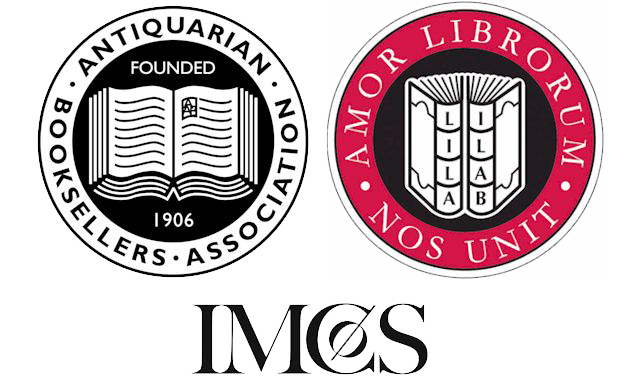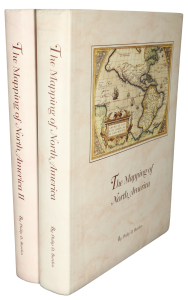Rare Maps and Prints
- World & Celestial
- North America
- West Indies, South & Central America
- British Isles
- British Isles
- English counties
- Large-scale
- Bedfordshire
- Berkshire
- Buckinghamshire
- Cambridgeshire
- Cheshire
- Cornwall
- Cumberland
- Derbyshire
- Devon
- Dorset
- Durham
- Essex
- Gloucestershire
- Hampshire
- Herefordshire
- Hertfordshire
- Huntingdonshire
- Islands
- Kent
- Lancashire
- Leicestershire
- Lincolnshire
- Middlesex
- Norfolk
- Northamptonshire
- Northumberland
- Nottinghamshire
- Oxfordshire
- Rutland
- Shropshire
- Somerset
- Staffordshire
- Suffolk
- Surrey
- Sussex
- Warwickshire
- Westmoreland
- Wiltshire
- Worcestershire
- Yorkshire
- Wales
- Scotland
- Ireland
- Western Europe
- Eastern Europe
- Middle East
- Africa
- Asia
- Australasia & Pacific
- Decorative Prints
- Title Pages
Mr. Philip D. Burden
P.O. Box 863,
Chalfont St. Giles, Bucks HP6 9HD,
UNITED KINGDOM
Tel: +44 (0) 1494 76 33 13
Email: enquiries@caburden.com
This is the last issue of the final series of plates for John Cary’s Traveller’s Companion. On 17 January 1820, John Cary’s premises on the Strand burned down. The fire also destroyed his brother William’s premises next door. The business moved to 86 St. James’s Street shortly thereafter. John was now about 66 years old and chose this moment to retire to the King’s Road in Chelsea and died in 1835 aged 81.
The business was continued by his sons George (1787-1859) and John (1791-1852). It is not known if the plates for the Traveller’s Companion were lost in the fire or that they were again worn by overuse. Whichever it was, in 1822 a new series of copper plates was introduced. These were slightly different. Notable alterations are the removal of John Cary’s name as engraver either side of the title at the top. The plates are now all undated and bear the imprint of G & J Cary below. A more subtle change to the plates occurs in the alteration of the placenames on those of Berkshire, Cheshire, Cornwall, Devon, Dorset, Durham, Essex, Herts, Kent, Middlesex, Norfolk, Northants, Rutland, Somerset, Suffolk, Surrey, Sussex, Westmoreland, North Wales and South Wales. These are now read from west to east.
Further editions appeared in 1824, 1826, 1828 and 1840. George Frederick Cruchley (1797-1880) had learned his trade with Aaron Arrowsmith and began to work for himself in 1823. His early days were concentrated on publishing maps of London but following the death of John Cary in 1835 he acquired much of the stock from the surviving heirs. Cruchley made lithographic transfers from the plates until he sold them all in 1877. Cruchley’s main marketing tool was to add to the original plate details of the railways, postal, telegraph and other useful information.
The maps are printed back-to-back and the atlas is undated. The accession date at the British Library is 1862 although it has been noted that the railway data is somewhat earlier. Provenance: private English collection. Chubb (1927) no. 550; Fordham (1925a) pp. 39-40; Nicholson (2003) ‘G. F. Cruchley and ‘Maps for the Million’, in IMCoS Journal 93 pp. 21-38; Smith (1989b) ‘George Frederick Cruchley, 1796-1880’, in ‘The Map Collector’ no. 49 pp. 16-22; Smith (1988a); Worms & Baynton-Williams (2011).
The business was continued by his sons George (1787-1859) and John (1791-1852). It is not known if the plates for the Traveller’s Companion were lost in the fire or that they were again worn by overuse. Whichever it was, in 1822 a new series of copper plates was introduced. These were slightly different. Notable alterations are the removal of John Cary’s name as engraver either side of the title at the top. The plates are now all undated and bear the imprint of G & J Cary below. A more subtle change to the plates occurs in the alteration of the placenames on those of Berkshire, Cheshire, Cornwall, Devon, Dorset, Durham, Essex, Herts, Kent, Middlesex, Norfolk, Northants, Rutland, Somerset, Suffolk, Surrey, Sussex, Westmoreland, North Wales and South Wales. These are now read from west to east.
Further editions appeared in 1824, 1826, 1828 and 1840. George Frederick Cruchley (1797-1880) had learned his trade with Aaron Arrowsmith and began to work for himself in 1823. His early days were concentrated on publishing maps of London but following the death of John Cary in 1835 he acquired much of the stock from the surviving heirs. Cruchley made lithographic transfers from the plates until he sold them all in 1877. Cruchley’s main marketing tool was to add to the original plate details of the railways, postal, telegraph and other useful information.
The maps are printed back-to-back and the atlas is undated. The accession date at the British Library is 1862 although it has been noted that the railway data is somewhat earlier. Provenance: private English collection. Chubb (1927) no. 550; Fordham (1925a) pp. 39-40; Nicholson (2003) ‘G. F. Cruchley and ‘Maps for the Million’, in IMCoS Journal 93 pp. 21-38; Smith (1989b) ‘George Frederick Cruchley, 1796-1880’, in ‘The Map Collector’ no. 49 pp. 16-22; Smith (1988a); Worms & Baynton-Williams (2011).
CRUCHLEY, George Frederick
Cruchley's Railroad Companion to England & Wales shewing all the Railways & Stations with their names, also The Turnpike Roads
G. F. Cruchley, Map-Seller & Globe Maker 81, Fleet Street, London, c.1862
Small octavo (135 x 105 mm.), contemporary publisher’s limp cloth boards, ornate blind oval panel with gilt title within on the upper cover, light wear. With lithographic title and general map on the verso, list of maps and county map on verso, with 43 lithographic maps, Yorkshire folding, in good condition.
Stock number: 10261
SOLD








